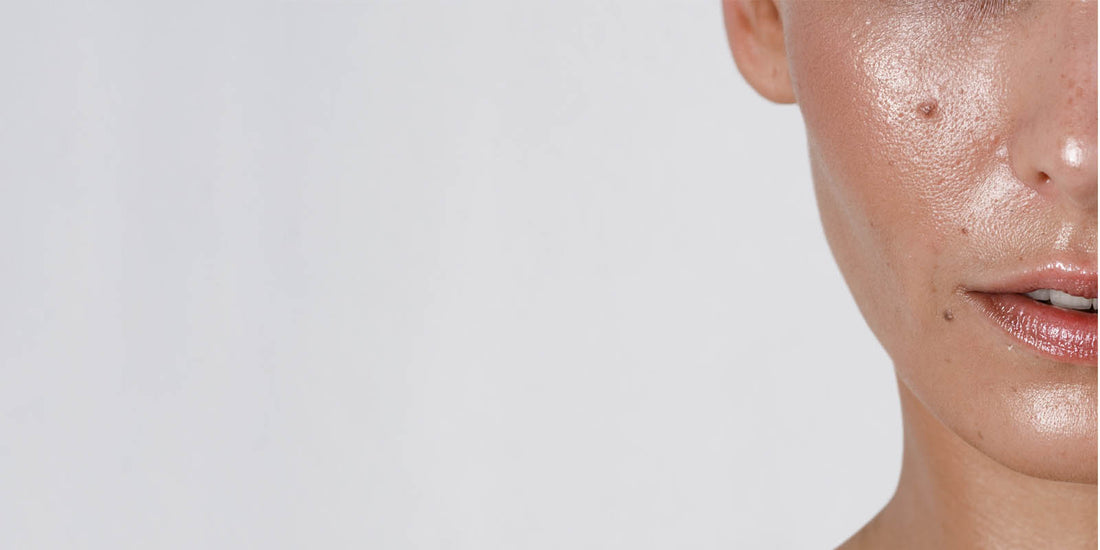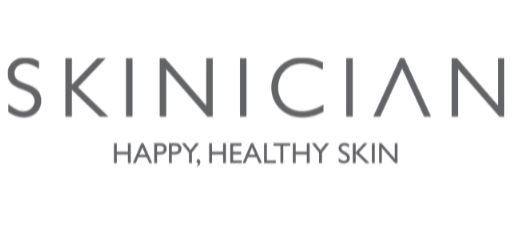
Oily Skincare Routine and Tips for Women in Their 40s
Share
If you're experiencing oily skin in your 40s, you're not alone. Believe it or not, this skin concern can occur at any age. While excess oil is typically a natural response to changes within the body, it can leave you feeling lacklustre. Today, we share our favourite oily skincare tips for women in their 40s. Let’s nourish your skin back into balance so you can feel at your best.
In this article:
- Why Can Skin Become Oily in Your 40s?
- Oily Skincare Routine for Women in Their 40s
- Skincare Video: Best Practice in Your 40s
- How To Manage Sudden Oily Skin in Your 40s
- Natural Skin Changes To Expect in Your 40s
Why Can Skin Become Oily in Your 40s?
Skin can become oily in your 40s due to an overproduction of sebum by your sebaceous glands. Multiple factors can cause sebum excess. It could be hormonal fluctuations linked to perimenopause, genetics, increased stress or following the wrong routine for your skin type.
Oily Skincare Routine for Women in Their 40s
Although we usually associate oilier skin with adolescence, our sebaceous glands can overproduce sebum at any age. Here's a regime ideal for women in their 40s with oily skin.
Note: For the best results, take a holistic approach, which means exercising (as able), taking appropriate rest, enjoying a healthy diet, and using the correct skincare.
Step 1: Cleanse
Cleansing is essential to daily skincare because it removes dirt, sweat, and makeup that clogs pores and causes oily skin.
But it's crucial not to over wash your skin or use the wrong skincare product for your oily face. Both can strip away the natural oil necessary to maintain skin health and trigger your sebaceous glands to produce excess sebum to overcompensate.
First, consider a targeted cleansing gel for oily skin. Look for formulas with gentle ingredients like witch hazel which is known to remove excess oils without compromising the skin's delicate barrier. Second, avoid over washing by cleansing no more than twice a day, preferably in the morning and at night.
Step 2: Exfoliate
Exfoliating can help remove the harder-to-reach dead skin cells and dirt deep within your pores. The right exfoliator can help you better manage oil and stimulate your skin to remove and replace dead cells faster, resulting in a brighter complexion.
As with cleansing, exfoliating too much or not at all and using the wrong product for your skin type can cause excess sebum. Look for a exfoliant with AHA's. Unlike other more harsh exfoliants which can cause irritation, AHA's will loosen excess oil and skin cells without the upsetting your skin. You don't need to exfoliate every day. Two to three times a week will do.
Top tip: Most experts suggest cleansing first to remove a layer of dirt and help your exfoliator reach the deeper layer. But remember, everyone's skin is different, so experiment with either cleansing or exfoliating first to see which approach works best for you.
Step 3: Tone
Facial toners can hydrate, balance, and brighten the skin. Still, the wrong toner can strip natural oils and cause sebum overproduction. A toner formulated for oily skin will gently refresh while preserving those oils key to maintaining skin health.
Formulas with vitamin C and zinc PCA can help prevent hormonal breakouts, keeping oily skin looking mattified and healthy throughout the day. Toning should take place after you cleanse and exfoliate, but you can keep spritzing your face a few times throughout the day to calm and balance the skin.
Step 4: Moisturise
If you have oily skin, it can be tempting to avoid moisturising for fear of increasing oil. However, according to SKINICIAN Co-founder Hilary McMurray, this approach:
"...will only make your skin react by producing more oil to clog pores and make matters worse."
A multifunctional moisturiser specifically for oily skin can protect your skin's natural oil while reducing shine. A product like this will also enhance skin brightness (which can fade as we age).
Skincare Video: Best Practice in Your 40s
Join Lindsey as she provides advice about skincare through the ages. In this section Lindsey shares skincare tips and product to help combat fine lines and wrinkles.
How To Manage Sudden Oily Skin in Your 40s
Sudden oily skin in your 40s could be related to hormone fluctuations, including those caused by perimenopause—a biological process typically occurring in women ages 40 to 44. Lifestyle factors like stress or lack of sleep can also cause sudden oily skin. Here are some accessible tips for managing this skin concern in your 40s.
Consistent, Targeted Skincare Regime
Following a skincare regime using skincare products for oily skin, as outlined above, can help to reduce excess sebum at any age. But to get the best out of your targeted routine, consistency also matters.
Once you've found the product(s) that work for your skin type, follow your basic routine each day. Any additions like exfoliating or face masks should occur as specified in the product instructions.
Adequate Relaxation
Oestrogen levels decrease as women age, which can commonly cause dryer skin. Conversely, the skin can get even oilier for those already prone to oily skin. Some women in their 40s even experience acne for the first.
In any case, your hormones are more likely to be temperamental at this stage. But you can manage oily skin by working to balance the hormone fluctuations you can control.
Stress can stimulate excess sebum production, and one of the critical hormones in this process is cortisol. So why not try mind-body activities like yoga to help regulate cortisol levels? Focusing on relaxation can also improve sleep quality (another element in hormone regulation).
Vitamins
You might consider vitamins if your sudden oily skin is related to hormonal fluctuations from perimenopause. Vitamin B6, in particular, plays a role in balancing hormones, which is helpful for oily skin caused by hormonal changes. To introduce B6 into your system, try a vitamin B complex or include oats, poultry and bananas in your diet.
Stay Hydrated
When dehydrated, your sebaceous glands will respond by producing additional sebum to compensate for the lack of fluid in your system. This is a natural and normal process for skin health maintenance. However, if you're prone to oily skin, it can worsen your skin concerns. Drink six to eight glasses of sugar-free fluid (preferably water) daily to stay hydrated.
Natural Skin Changes To Expect in Your 40s
A sudden appearance of oily skin is sometimes the exception rather than the rule. But most women in their 40s can still expect more general (and perfectly natural) skin changes. Here's what you might experience.
A Duller Complexion
As we age, our skin sheds and replaces dead cells (cellular turnover) at a slower pace. A build-up of dead skin shells can make your skin appear dull. You can support your skin by exfoliating up to three times a week and moisturising to restore radiance.
Assisting cell turnover with the right exfoliator for your skin type can also help you manage hormone-related breakouts caused by perimenopause.
Hyperpigmentation
Hyperpigmentation means that some areas of our skin appear darker than others, resulting in grey, red, black or brown patches or spots across the skin.
We accrue more cases of sun exposure and hormonal fluctuations with age. Meaning our melanocytes are more likely to over-produce pigment to offset the damage. Excess pigment causes hyperpigmentation.
Fine Lines and Wrinkles
It's natural for our skin to weaken and produce less collagen, causing it to lose plumpness as we age. We also have less elastin, making it harder for our skin to 'bounce back'. Meaning we're more prone to fine lines and wrinkles.
These usually appear first around the eye area because the skin is thinner. Adequate sleep paired with a hydrating eye cream will help to nourish the skin and reduce fine lines in these areas.
General Skin Care Tips for Women in Their 40s
Rather than 'fighting' the healthy part of life that is ageing, we show women in their 40s how to support their skin through these changes. We recommend gentle preventative care that nourishes the skin and leaves you feeling at your best.
Update Your Skincare Regime
Our skin naturally changes as we age, so the skin regime that served you in your 20s and 30s might not be suitable in your 40s. If you're not already using vitamin C in your skincare, now is an excellent time to start.
Vitamin C supports your body with collagen production (which slows down with age). Including this vitamin in your skincare can help your skin stay firm and radiant.
Protect Your Skin's Natural Oils
Aggressive facial peels that don't support the natural oils in your skin can inadvertently stress it, causing excess oil production, drying or irritation.
Instead, consider nourishing serums containing vitamin C that boost collagen and reduce skin pigmentation. These products can gently smooth out fine lines and protect rather than compromise your skin's natural oils.
Wear an SPF Every Day
A suitable SPF for oily skin can help protect against sun-related skin damage that contributes to many visible signs of ageing, including hyperpigmentation. An SPF will also protect those at particular risk of sun damage due to decreased oestrogen levels during perimenopause.
Top tip: Skincare products with encapsulated SPF will help you streamline your skincare routine. If you have oily or acne-prone skin, use products formulated for your skin type to prevent clogging your pores and stimulating sebum overproduction.
For more guides to help combat oily skin, read:
- Oily Skincare Routine
- How to Reduce Oily Skin
- Vitamins To Take And Apply To Help Combat Oily Skin
- Transformative Skincare Ingredients for Oily Skin
Or read real life oily skin journeys:

